Conflict Management in Organization Communication Case Study Analysis
VerifiedAdded on 2021/05/31
|5
|1040
|32
Case Study
AI Summary
This case study delves into the fundamentals of organizational communication, focusing on conflict management within the context of the AMEX program. The analysis centers on a scenario where senior manager Jane must decide on the lead position for a new career development program, facing conflict among her officials. The assignment explores conflict stages, including latent, perception, and manifest stages, and examines the conflict preference strategies adopted by various individuals, such as avoidance, competition, and collaboration. The role of emotions in conflict development is also highlighted. The study suggests that Jane should consider splitting the lead position to accommodate both candidates, promoting collaboration and benefiting the AMEX corporation. The case emphasizes the need for managers to adopt effective conflict management models and strategies to achieve compromise, interpersonal sensitivity, and competency in organizational settings. References to key theories and authors like Putnam and Shockley-Zalabak support the analysis.
1 out of 5
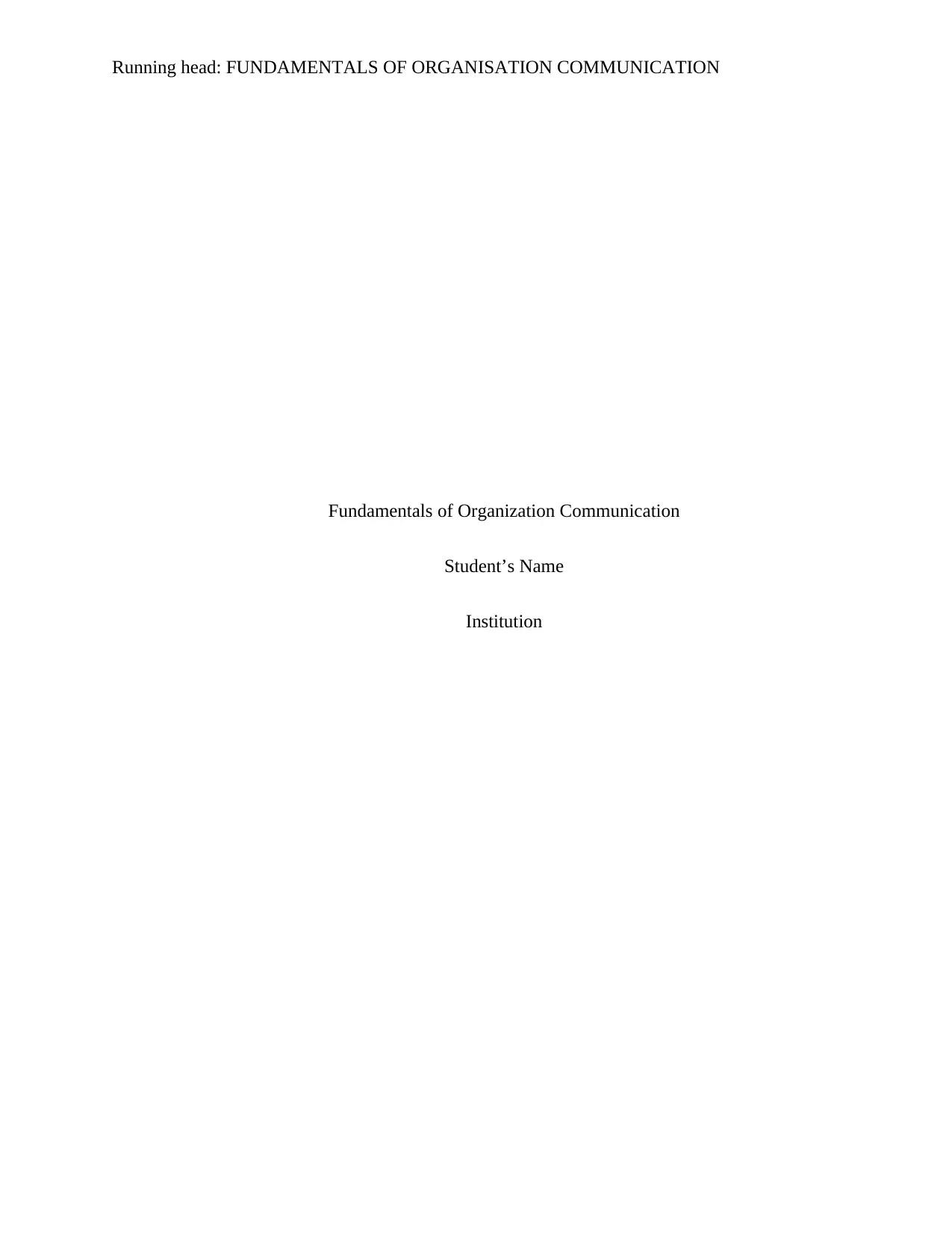
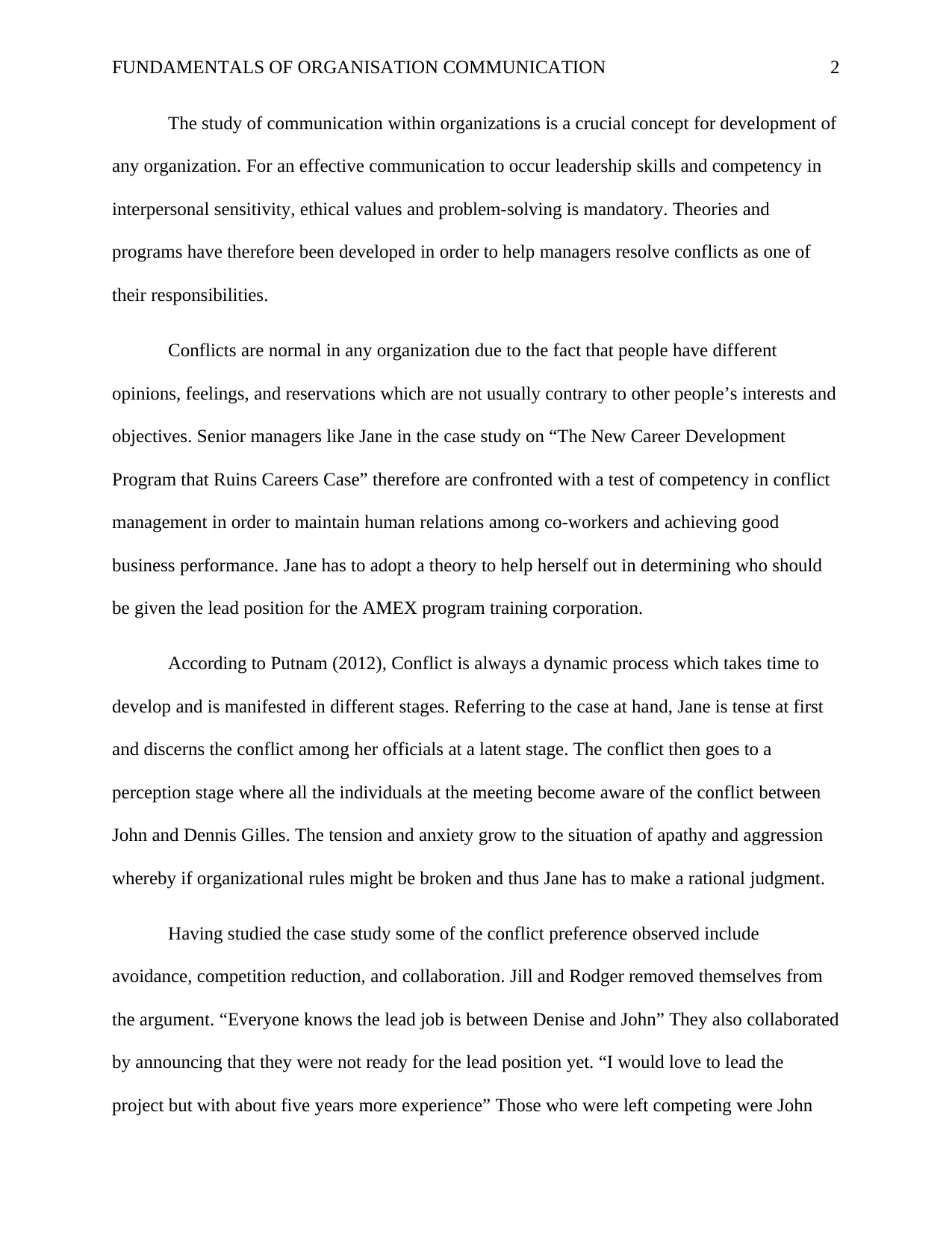
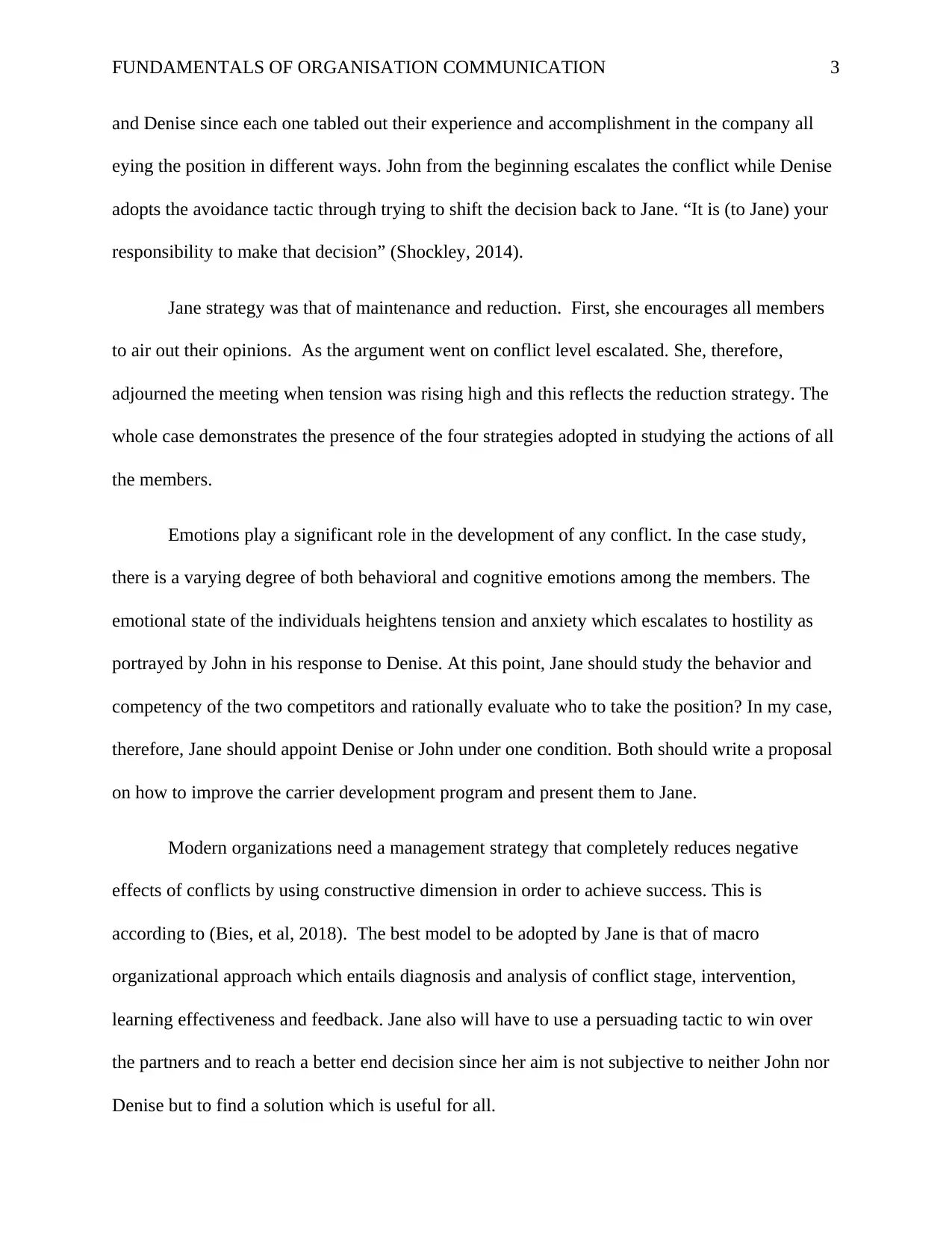

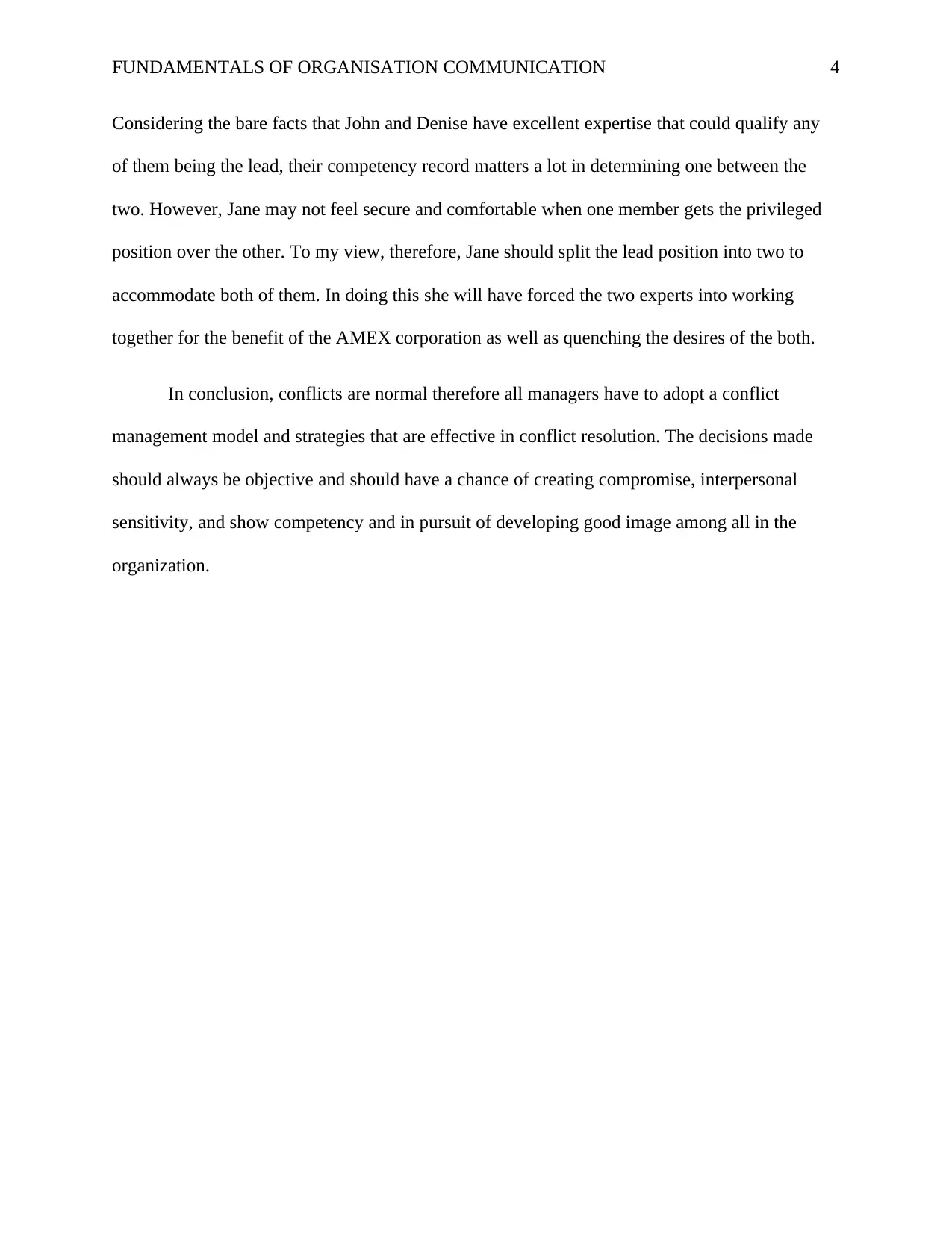
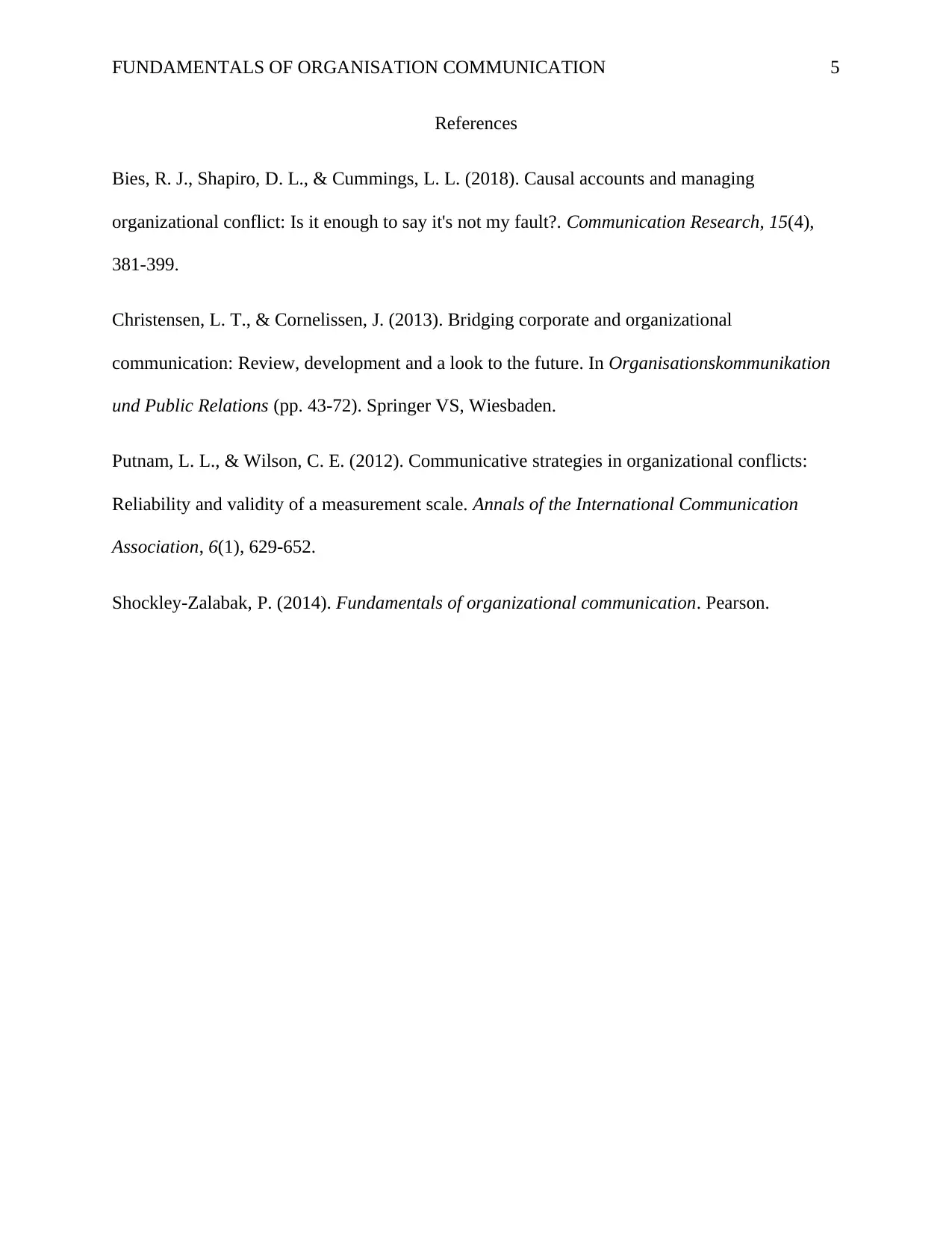

![[object Object]](/_next/static/media/star-bottom.7253800d.svg)